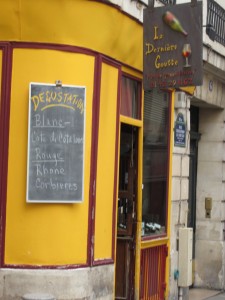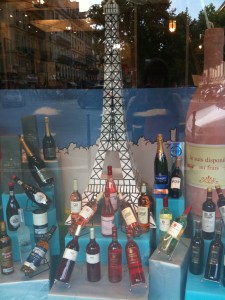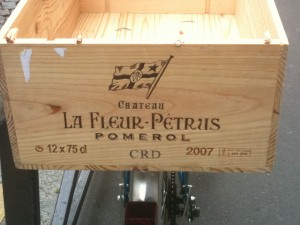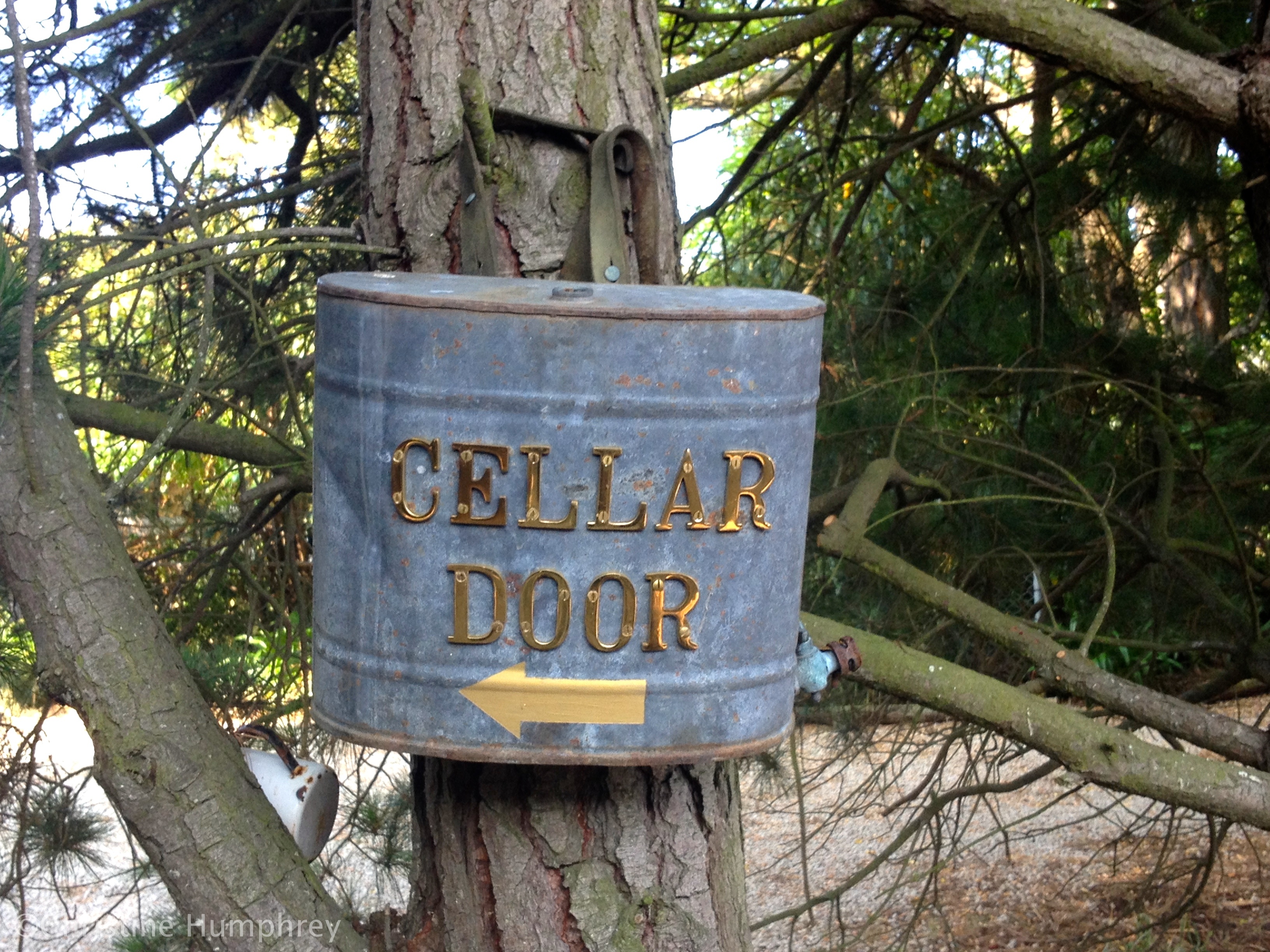This title seems simplistic, and the answer would have been much shorter at a different point in time. Today, we have more types of places and ways to purchase wine. Some reasons for this include e-commerce and a recession-driven wine glut that has forced creative selling and marketing techniques.
Traditional outlets for wine sales are brick and mortar retailers such as specialty wine stores, large chain wine stores like Total Wine and BevMo, box stores such as Costco and Sam’s Club, mass merchandisers like Target and Wal-Mart and your local supermarket.
La Derniere Goutte specialty wine store, Paris 6eme
Wine can often be purchased at wine events, like wine tastings and dinners, and at wineries themselves. This is the best case scenario, as you can taste a wine before you purchase it.
Auctions have been around for many years and are perfect vehicles for estate wine sales and for collectors looking to find rare and vintage wines. Live auctions are a great way to meet other collectors and connoisseurs in a social setting with great food and vintage wines often being served. Technology has made these events accessible worldwide as they are usually simulcast to international and/or domestic cities in real time. Some examples are well-known names such as Sotheby’s, Christie’s, Spectrum, Zachy’s and Bonham’s.
Some auctions are strictly online, enabling a wine collector to hunt for that special vintage or rare wine in the comfort of his or her jammies at home, 24/7. Some examples of these 21st century auctions are winecommune.com, winebid.com, icollect.com and eBay, just to name a few.
During recessionary periods the last 20 years or so, other retail industries have needed to find creative ways to dispose of unpurchased inventory in order to produce and offer new goods. Outlet centers have cropped up in much of the modern world to move merchandise that would otherwise be left unsold. “Jobbers” buy odd lots and sell them off to these discount retailers. Many brands and stores have their own outlets for selling off overstocked merchandise. Some examples are Nordstrom Rack, Odd Lots, Dollar Stores as well as brands like J Crew, Restoration Hardware, Mikasa, Levis, etc. In the last ten years, retailers and jobbers have added e-commmerce to their repertoire to relieve themselves of heavy inventories.
Likewise, the recession of the past few years has also forced the wine industry to become more creative to sell its wines to a more reluctant and cash-strapped consumer. Flash sales have entered the world of wine. There are two business models. One, like WTSO (Wines Til Sold Out) buys wines at deep discounts from wineries and wholesalers, thus becoming the online clearance center. The other model is that of the marketing agent that facilitates the sale from the source to the consumer in a drop shipment. Lot 18 is a great example of this type. Other flash sales include Wired for Wine, Invino, Wine Access, Wine Heist and Last Call Wines. All of them have deals that last a few days or less or until the offer sells out.
One person who has really put on his thinking cap with a viable business model, at least for now, is Cameron Hughes. You may have seen his wines at Costco or Sam’s Club. He is actually doing what is done in the retail clothing business… to quote his website…
“As a modern international négociant, we partner with top-tier wineries around the world, buying and contracting their ultra-premium wine to sell at very affordable prices”
This is essentially a similar strategy to clothing jobbers buying excessive inventory from retailers and then selling them off to liquitators. But, this time the commodity is different. Instead of tee-shirts, it’s wine. But, there is another variation. Instead of buying bottled wine and selling it with its original label, he buys the wine, bottles and labels it with his own labels, which are very clean and generic-loooking, with names like Lot 150 Pinot Noir, etc.
Many of his wines sell for $25 per bottle or less. In addition, he has a well-crafted sales and marketing plan. He sells by the case, through his own”wine clubs” and in warehouse stores and other retailers. He takes excess wine off the producers’ hands and provides the public with a real bargain. So far, his plan is working quite nicely. chwine.com
I now want to mention a few other companies, one that’s been around for many years and two who are quite new. Each is unique and is providing French and Italian wines to the American public.
The first of these is Californian Kermit Lynch. He started in the wine industry in 1972 when he opened his wine shop in Berkeley, Ca. that is still open today. Additionally, he is a micro-importer who sources wines from France and Italy and offers them to the public in his store and in his wine club. For $39 per month (in January 2012) you will receive 2 bottles of his hand-picked French and Italian wines. His selections come from any of 14 wine regions in France and 6 in Italy. He also sells to the trade and is an accomplished author in the world of wine. He and his family share their time between Berkeley and Provence, where they grow Mourvedre. Kermitlynch.com
A colorful window display at a wine shop in the Madeleine, Paris 8eme
Another micro-importer that is newer to the scene is Mon D Vin…”Demystifying French Wine”… founded in 2009 by Paris-based American Jennifer Goupil, whom I had the pleasure of meeting last fall at my favorite Paris resto/wine bar. Mon D Vin also carefully hand selects its offerings from “top-quality, small producers that are dedicated to their unique terroir”. Mon D Vin’s website provides a “virtual sommelier” that guides you through the world of French wine by varietal or wine description. Mon D Vin aims to make the world of French wine easier to understand…thus demystifying it. They also have a wine club or you can customize your purchase from their website. mondvin.com
My most recent discovery is VinConnect, a new “mailing list” company based in Charlottesville, Va. Their president, Kevin Sidders, explained that his new company acts as the US intermediary…enabling the American wine consumer to buy higher end European wines directly from the domaine. They are currently working with four domaines in France and five in Italy, with more in the works.
As you can see, there are many more fun and exciting ways to access great wines than just running into the neighborhood supermarket!
Until next time…à votre santé !
The beautiful grapes in the header of this blog are Cabernet Sauvignon at the Croix de Mission vineyard at Domaine des Rochelles that I photographed in Anjou, in the Loire Valley of France, on September 24, 2011. I spent a lovely day at Le Tasting Room with Cathy and Nigel Henton at their picturesque property. I enjoyed a tutored tasting and presentation about the wines of the region, a wonderful wine and food pairing luncheon in their cave and a tour of the vineyards where the grapes were photographed.




